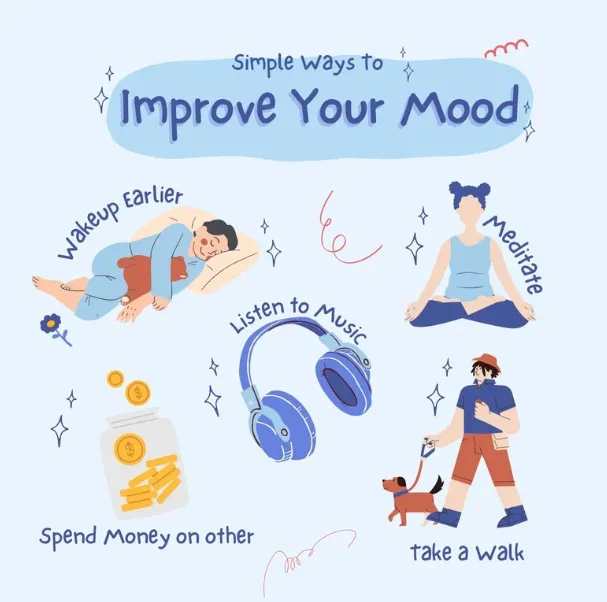Beginner Workout: Easy Start Guide
Beginner Workout: Easy Start Guide In the realm of fitness, three-month workout programs dominate the landscape. You’ve even seen plenty of them in our magazine over the years. Are they effective? Absolutely. But we’re going to let you in on an interesting secret: It doesn’t necessarily take 8 or 12 weeks to get your feet wet in the gym. Not that you’ll be a seasoned vet after four weeks, but if you can just get that first month under your belt, you’ll get yourself over the proverbial hump, where so many fail and give up, and set the stage for a lifetime of muscle gains.
Let’s just call this the accelerated beginner’s guide to bodybuilding. In this plan, your first month of training will be demanding, but not so demanding as to cause injury (or worse yet, burnout), and progressive in the sense that each week you’ll graduate to different exercises, higher volume, more intensity or all of the above. After four weeks you’ll not only be ready for the next challenge but you’ll have built a significant amount of quality muscle. In other words, one month from now you’ll look significantly better with your shirt off than you look now. (How’s that for results?)
This program isn’t just for the true beginner who has never touched a weight before; it’s also suitable for anyone who has taken an extended leave of absence from training. How long has it been since you went to the gym regularly? Six months? A year? Five years? No worries: The following routines will get you back on track in—you guessed it—just four short weeks. Let’s get to work.
Summary:
A four-week accelerated beginner’s bodybuilding plan helps you overcome the initial challenges of gym training, gradually increasing intensity and volume. It’s ideal for true beginners or those returning after a long break, building muscle and confidence within a month.

Beginner gym workout for males
This workout is designed to help men gain strength and lean mass. This is a full body beginner workout with an extra focus on the arms and core. You’ll find by the end of this plan that all your numbers (reps or amount of weight lifted) on the exercises should increase nearly every week and you will have noticed changes in your body shape. Read this guide to help you get started.
- Seated chest press (10 reps x 4 sets)
- Seated rows (10 reps x 4 sets)
- Wide grip Lat pulldown (10 reps x 4 sets)
- Seated leg press (10 reps x 4 sets)
- Dumbbell seated shoulder press (10 reps x 4 sets)
- Dumbbell bicep curls (10 reps x 4 sets)
- Close grip triceps’ press ups (10 reps x 4 sets)
- Cable rotations/twists (10 reps x 4 sets)
- Reverse crunches (10 reps x 4 sets)

Beginner gym workout for females
This workout for females is designed to tone the whole body, with a slight emphasis on the legs and glutes (bottom). It’s a myth that women will become bulky if they lift weights. Weight training in fact helps women become stronger, leaner and more toned. Read this guide to help you get started.
- Seated leg press (10 reps x 3 sets)
- Seated shoulder press (10 reps x 3 sets)
- Close grip Lat pulldown (10 reps x 3 sets)
- Bodyweight lunges (10 reps x 3 sets)
- Full/kneeling press ups (10 reps x 3 sets)
- Plank (30 secs x 3)
- Leg raises (10 reps x 3 sets)
Beginner’s Workout at a Glance
- Week 1: Full-body split
- Week 2: Two-day split: Upper body/Lower body
- Week 3: Three-day split: Push/Pull/Legs
- Week 4: Four-day split: Full body
1-week sample exercise program
Below is an easy-to-follow, 1-week exercise program that doesn’t require equipment and will only take you 30–45 minutes a day to complete.
This program can be adjusted to your fitness level and made as challenging as you want.
- Monday: 40-minute moderate-pace jog or brisk walk.
- Tuesday: Rest day.
- Wednesday: Walk briskly for 10 minutes. Then, complete the following circuits, resting 1 minute after each set but not between exercises. Stretch afterward.
- Circuit #1: 3 sets alternating 10 lunges for each leg, 10 pushups, 10 sit ups
- Circuit #2: 3 sets alternating 10 chair-dips, 10 jumping jacks, 10 air squats
- Thursday: Rest day.
- Friday: 30-minute bike ride or moderate-pace jog.
- Saturday: Rest day.
- Sunday: Run, jog, or take a long walk for 40 minutes.
Week 2: Split Decision
You’re only a week into the program, yet you’ll begin to train different body parts on different days with a two-day training split (meaning the entire body is trained over the course of two days, rather than one as in the first week). You’ll train a total of four days this week; the split includes two upper-body days (Monday and Thursday) and two lower-body days (Tuesday and Friday), and each body part is trained twice. Wednesday, Saturday and Sunday will be your recovery days.
Several exercises from Week 1 are carried over to Week 2, but one move is added to each body part routine—with the exception of abs—so you can train all muscle groups more completely from multiple angles. Chest, for example, includes two exercises: One is a compound movement (dumbbell bench press) that involves multiple joints (both the shoulder and elbow) to work the largest amount of muscle possible, and the other is an isolation exercise (dumbbell flye) that involves only one joint (shoulder) and targets the pecs to a greater extent. (When doing presses for chest, the deltoids and triceps are involved to a degree, meaning presses don’t isolate the pecs as much as flyers do.)
Summary
In Week 2 of the program, you shift to a two-day training split, targeting the upper body on Monday and Thursday and the lower body on Tuesday and Friday, with rest days on Wednesday, Saturday, and Sunday. New exercises are added to enhance muscle engagement, combining compound and isolation movements for comprehensive development.
Week 3: Three on Three
In the third week of the program we step it up to a three-day training split: Train all “pushing” body parts (chest, shoulders, triceps) on Day 1; hit the “pulling” body parts (back, biceps) and abs on Day 2; and work your lower body (quads, glutes, hamstrings, calves) on Day 3. As in Week 2, you train each body part twice a week, so you’ll hit the gym six days this week.
One new exercise is added to each body part routine to provide even more angles from which to train your target muscles to promote complete development. You’ll hit each muscle group with two exercises of 3–4 sets each: four sets for large body parts (chest, back, shoulders, quads, hamstrings) and three sets for smaller body parts (biceps, triceps, abs, calves). The result is 16 total sets for the week for large body parts and 12 sets total for smaller ones—again, working in the 8–15-rep range—which is a substantial increase in volume from Week 1.
Week 4: Turning Up the Volume
In the fourth and final week of the program, you’ll train four days in a four-way split that hits each bodypart just once (except for calves and abs, which are each trained twice). Four-day splits are common among experienced lifters because they involve training fewer body parts (typically 2–3) per workout, which gives each muscle group ample attention and allows you to train with higher volume. As you’ll see, chest and triceps are paired up, as are back with biceps and quads with hamstrings, each a very common pairing among novice and advanced bodybuilders. Shoulders are trained more or less on their own, and you’ll alternate hitting calves and abs—which respond well to being trained multiple times per week—every other workout. No new exercises are introduced in Week 4 so that you can focus on intensity in your workouts instead of learning new movements.
Summary
In Week 4, the program shifts to a four-day split, targeting each major muscle group once (except calves and abs, trained twice). Muscle pairings like chest/triceps and back/biceps allow focused, high-volume training, with an emphasis on workout intensity rather than introducing new exercises.
How to stay motivated
Beginner Workout: Easy Start Guide The key to staying motivated and making exercise a habit is to have fun while doing it. This helps you to not dread exercising. Like the sample exercise program shown above, you can mix up activities while keeping it fun for you.
If you’re able to and want to, joining a gym or taking a virtual fitness class like yoga or Pilates, hiring a personal trainer, or doing team sports are good ideas to help increase motivation and enjoyment.
Working out as a group or with a friend can also help maintain accountability and motivate you to keep up your exercise routine. Furthermore, tracking your progress, such as logging your weightlifting levels or noting your running times, can help keep you motivated to improve your personal records.
The bottom line
Starting a new exercise routine can be challenging. However, having real objectives can help you maintain a fitness program in the long term. There are many different types of physical activity to choose from. Find a few that work for you and be sure to vary them occasionally.
The goal is to start slowly, build up your fitness level, and let your body rest from time to time to help prevent injuries.
Keeping track of your progress or taking a virtual group class are examples of actionable steps that can help you stay motivated and achieve your goals. It’s also important to eat a healthy diet and hydrate regularly as well as check in with your healthcare provider to monitor your health.
Summary:
Starting an exercise routine requires setting clear goals and gradually building fitness while avoiding injuries. Track progress, vary activities, eat healthily, stay hydrated, and consult a healthcare provider to stay motivated and on track.
Wall pushups
Doing a standing pushup against the wall is a good starting place if you’re new to this move. By standing, you put less pressure on your joints.
- With your feet shoulder-width apart, stand about an arm’s length away from a wall.
- Place your palms on the wall as you lean forward into a standing plank position. Your arms should be shoulder height and shoulder-width apart.
- Inhale as you bend your elbows and slowly move your upper body toward the wall while keeping your feet flat on the ground.
- Hold this position for a second or two.
- Exhale and use your arms to push your body slowly back to your starting position.






